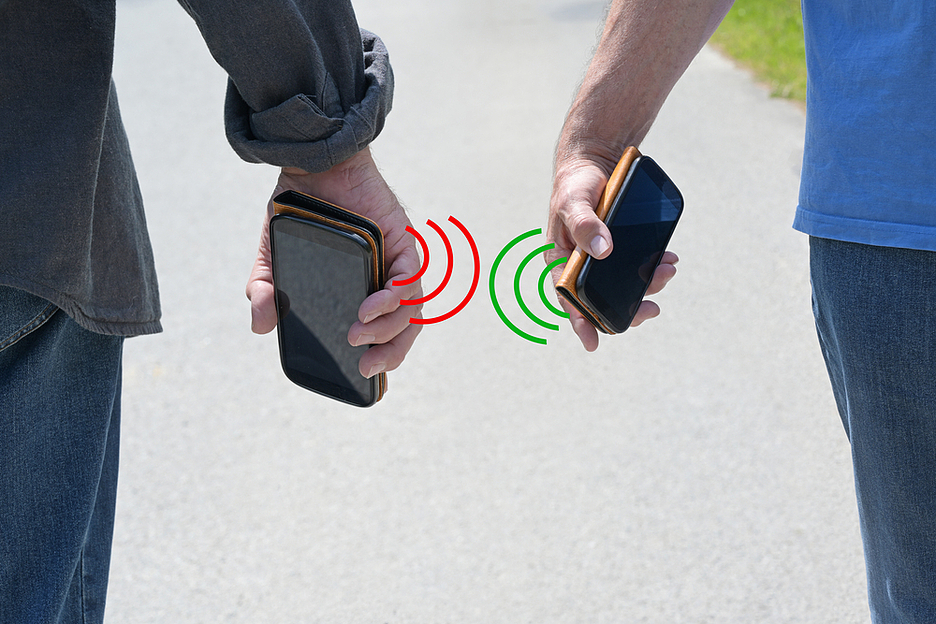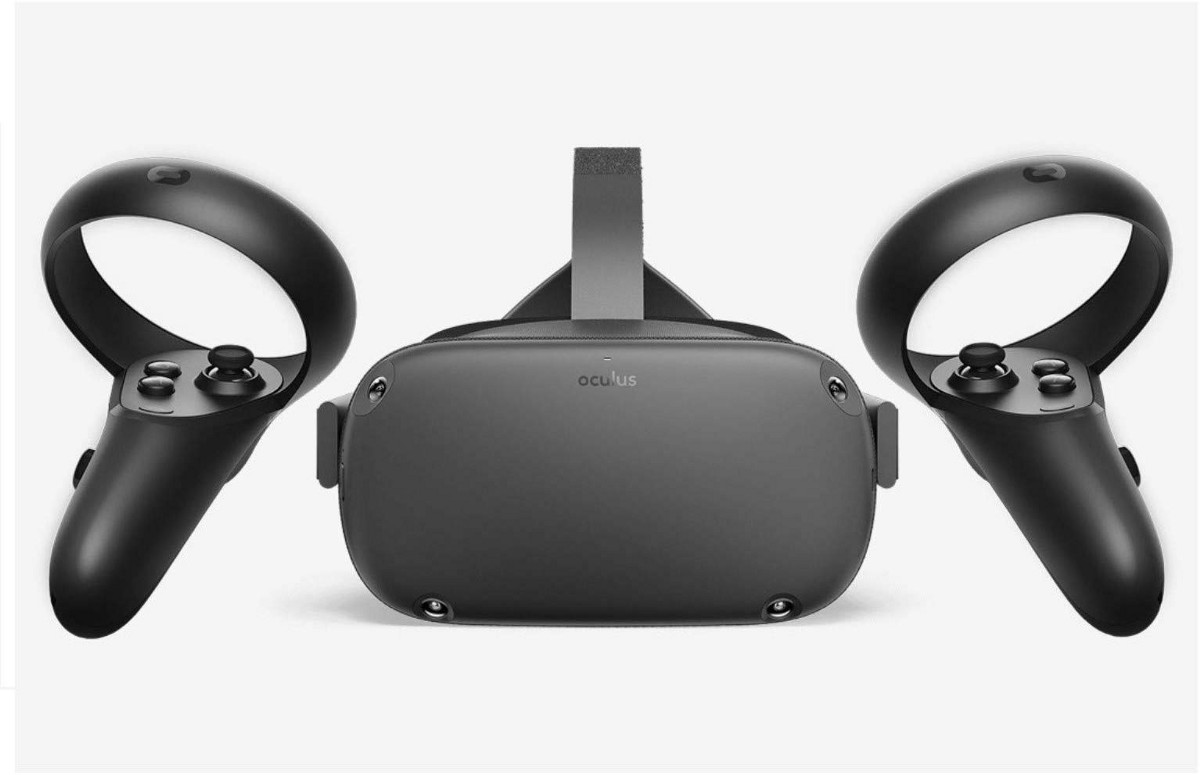The impressions come from the eVRydayVR YouTube channel, which has detailed them on Reddit and we offer them completely translated. They certainly reawaken the hype that we had something calmer after having received the DK2.
Tonight I had the opportunity to try the new demo of Sixense STEM at the SFVR Meetup #6. I’ve been very critical of STEM recently, mostly because of their lousy customer support, and that opinion hasn’t changed. But there’s no denying the dramatic improvements in their technology since I last tested it at SVVR expo. It is not easy to determine which improvements are due to the hardware and which to the new Jedi demo for DK2 (the previous one was on a DK1 and used a more primitive shooting gallery). I think they both have something to do, so I’ll just describe the experience.
Setting: In the demo, you participate in a Jedi training with dual lightsabers (yes, I know, it’s mind-blowing). It is a stand-up VR game and uses 3 trackers: a STEM pack on the back of the head and two controllers in the hands with STEMs (if you want something similar, you will have to pre-purchase the 3-Tracker STEM Kit for $390). The DK2’s absolute positioning camera was not in use. Unlike the previous demos, the overhead STEM does not expose its fragile electronic components, but comes with its plastic case.
Mechanical: You have a simple avatar that is animated with conventional inverse kinematics. First of all, you stretch out your arms and press the triggers to grab the lightsabers, and then press the triggers again to activate and deactivate the halo (you can’t let go of them). In the initial phase, they let you play with the swords and use them to engrave your name on the ground (which worked quite well, although my handwriting was not very pretty, I guess it was due to the fact that I was not used to writing with laser swords).
After the initial phase, a floating sphere appears that shoots bursts of energy at you that you can block with any of the swords (you can also dodge them by physically moving). If you miss, a blue shield appears for an instant around you that absorbs the shot. If the sphere approaches, you can hit it and make it move back. The Sixense representative said that there were about 10 difficulty levels, and the last one was really intense, with a lot of shooting, and requires very fast reflexes.
Quality of tracking: It took me a few seconds to find the STEM controllers as I didn’t see anything. It didn’t look like they were aligned with the positions of the controllers in the virtual world. But once I got my hands on them, those discrepancies in the interaction evaporated instantly. The tracking was fluid, without any kind of jump at any time, even when I lowered my hands to the ground or when I put them above my head, or when I turned slowly or quickly in 360 degrees. In a room with 5 working demos, with metal pipes above our heads and slabs everywhere, there were no glitches and no loss of tracking.
More importantly, the calibration was pretty much perfect, the best I’ve ever seen. I performed my usual calibration tests: put my arms in front of my left and right eyes, put them on the sides of my head, down against the floor. I stuck a sword in each eye with my lightsaber. At all times I saw my hands exactly where they were supposed to be. A representative from Sixense explained to me that the simultaneous tracking of the hands and the head allowed them to measure their relative positions with great precision. I asked if the biometrics (arm length, height) had to be adjusted and he replied that it was possible, but it would only affect the render of the virtual avatar.
For me, the most amazing moment was when the orb appeared and started shooting at me. I successfully blocked the first 3 or 4 shots, frowned and asked myself, “What’s going on here? Are you automatically blocking for me?“Well, no, it wasn’t like that. The interface was so natural that I had instinctively and precisely shielded myself with my sword without realizing what I was doing!
Future: I am very optimistic about the future plans and the attitude of Sixense.
-
IMUs: Current STEM technology has been greatly improved by the addition of IMUs [unidades de medida inercial] and perform the fusion of sensors, and the difference clearly jumps into view. Also, when I asked CEO Amir Rubin about tracking, he suggested using STEM to track forearms and using gloves with IMUs for finger tracking, which frankly sounds like a great solution. He assured me that they are not over-committed to magnetic technology and really value the combination of it with IMUs, and are open to collaborating with people who work in gloves.
-
Mobile RV: Amir Rubin mentioned the emerging mobile VR, which will be announced tomorrow, and described it as “almost as good as the DK2” (which shocked me quite a bit). He said they were going to license the STEM technology for follow-up. He also added that the Sixense SDK will have support for Android, so its peripherals will also work with mobile VR.
-
Upcoming demos: Sixense said public demos are coming, and described a multiplayer ping-pong demo in which STEM trackers were velcro-attached to real paddles. He claimed that serious ping-pong players could use complex techniques.
-
SDK support for various devices: Although I think it was already known, I was assured again that the Sixense SDK would include support not only for STEM and Hydra, but also for devices not manufactured by Sixense. I think PS Move was one of the ones they mentioned, and they also hinted that they could support a hypothetical Oculus device. A single API that supports many devices is much more attractive for developers.
-
Target price– The price of STEM at the time of release is a huge obstacle to development. If I remember correctly, Amir Rubin stated that his goal is to get down from $200 by the end of 2015, which sounds reasonable. Although I would love it to go below $100, I think that’s much more complicated.
Although the cancellation is still very difficult and you have to seriously consider it before pre-purchasing STEM, and the logical thing is to wait and see what happens after the Oculus Connect, I no longer have any reservations about the technology itself. My biggest concerns about the loss of tracking and calibration have not only disappeared, but have been solved better than in other systems. I am trying to cancel my cancellation request about my pre-purchase.
I also want to thank the Sixense team for being so patient with my multiple questions and for treating my thoughts and opinions on STEM as valid and important. I hope they do the same with everyone.
In the photo you can see the system of 5 STEM trackers that we hope to receive in Real or Virtual next month, having supported the Kickstarter campaign at the time. Today it has a prohibitive price ($ 579, about twice as much as during the campaign), but we will tell you in detail our impressions in one of our exhaustive analyzes and, of course, it will become one of the great stars of our videos.








